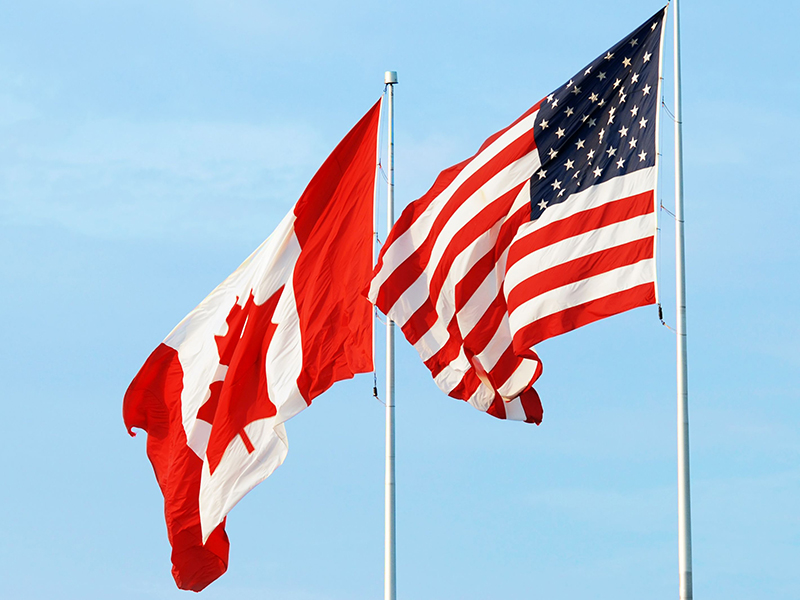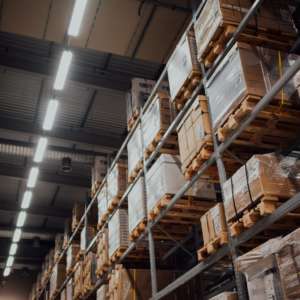The United States and Canada enjoy many cooperative agreements thanks to their shared history, culture, and trade. Both countries signed their first trade agreement in 1987, and their trade relationship grew into one of the largest in the world. Unsurprisingly, both countries consider the other their prime trading partners, and many businesses on either side of the border benefit from this shared market.
Despite such success, international shipping between the United States and Canada can still be overwhelming, especially if you’ve never done business across the border. While we’ve compiled a list of common shipping mistakes and how to avoid them, let’s first explore why the relationship between Canada and the US is so important.
Why Canada-US Trade is Important
The relationship between Canada and the United States is unique; both countries share a common ancestor in the United Kingdom, which, despite early conflict, has warmed into a close partnership evidenced by the world’s largest undefended border.
In addition to citizens’ freedom of movement on either side, the US-Canada border encourages hundreds of billions of dollars worth of trade flowing to either side. In 2021, both nations amounted to a whopping $664.2 billion in trade goods and services. Moreover, the two countries consider each other their prime trading partner, though China recently unseated Canada with imports to the United States. Still, if either country stopped trading with the other, both economies would collapse.
Common Canada-to-US Shipping Mistakes
Even with a close trade relationship, shipping from one country to the other can be quite a hassle. This is because each nation has different customs laws and regulations to abide by. In addition, getting goods physically across the border can be difficult due to traffic delays and corrections due to improper handling or import/export.
These mistakes can cause problems such as fines, long delivery times, and angry customers. The following issues are some of the more common mistakes on both sides of the border and our suggestions for avoiding them.
Lack of Proper Documentation
Even with a close trade partnership like the one the United States and Canada share, each country requires its own documentation, which can change depending on the type and volume of goods you’re shipping. Here are a few of the more common documents you’ll need:
- Commercial/Business Invoice
- NAFTA Certificate of Origin
- Importer ID Number
- Bill of Lading or Airway Bill
- Entry Manifest
- Entry/immediate delivery
- Harmonized System Tariff Classification
- Permits/Licenses
It is important to note that not all shipments need each of these documents. For example, mail shipments don’t need entry manifests or bills of lading. However, it’s crucial to research what documents your shipments need and which you are responsible for. In addition, some documents rely upon the carriers or brokers to fill them out correctly, so communication is vital if you want to know everything in order.
Failure to provide even one of the necessary documents can have your goods halted or seized at the border until the shipment is compliant. Clerical errors and omissions within the documents are not penalized much, but negligence can weigh heavily on your wallet. Such a penalty can be up to four times the duty or 40% of the value of the goods.
You can avoid this headache by being well-prepared and thorough in your examination of documents. In today’s world, some systems can collect all the information in one spot for everyone in the supply chain to see, including shippers, carriers, and brokers. That way, issues are addressed immediately, and your shipments can continue unimpeded.
Incorrect Classification of Goods
Just as you need the proper documentation for shipping between the US and Canada, all items must be declared and properly labeled. Improper classification can cause unnecessary stress, fines, and other legal penalties.
Because each nation values and regulates goods and services differently, classifying those products is essential to ensure they comply with all laws and customs rules. For example, one country might tariff a product differently than the other, whereas another might have recently made the import of a product illegal.
By properly weighing, labeling, and classifying your goods and staying on top of any regulatory changes, you can avoid these problems down the line.
Non-Compliance with Customs Regulations
Whether an accident or active neglect, misclassifying goods and forgetting documentation result in customs non-compliance. While non-compliance can be a slap on the wrist in the form of a small fine, harsher penalties can be as drastic as border authorities seizing the entire shipment.
Another common compliance mistake involves paying the correct taxes. For example, the United States doesn’t have a federal sales tax, leaving it up to the states to determine how to collect taxes on goods sold within their borders. Each state taxes different goods at different rates, sometimes classifying ecommerce sales differently than physical face-to-face transactions. The concept of tax nexus is critical to consider if you conduct ecommerce, especially if you’re shipping internationally.
With this in mind, educate yourself on the different fees, duties, taxes, and tariffs that apply to your products and the documentation and classification requirements above.
Not Using a Customs Broker
While this can all be overwhelming, there are professionals here to help. Customs brokers are well known for streamlining international trade processes. A well-established broker can leverage their network of connections to ensure your shipment gets through customs quickly and with as little stress as possible.
On top of saving you time and money, an experienced customs broker can inform you of any mistakes made and answer questions you might have. For those new to shipping across the border, few resources are more valuable than having a broker on your side.
When choosing a customs broker, look for veterans who’ve been in business for a few years. These brokers know the laws inside and out and are more likely to have established networks and a deep understanding of the best shipping strategies in your region. The more attuned they are to the region and shipping processes, the better their results.
Ship Confidently to the United States with UCanTrade
You don’t need to stress about the border if you’re a Canadian business looking to expand your market into the United States. Here at UCanTrade, we specialize in helping brands and businesses like yours make international shipping quick, easy, and hassle-free. If you’re interested in learning more, contact us today, and we’d love to work with you to develop shipping plans that will grow your business.



